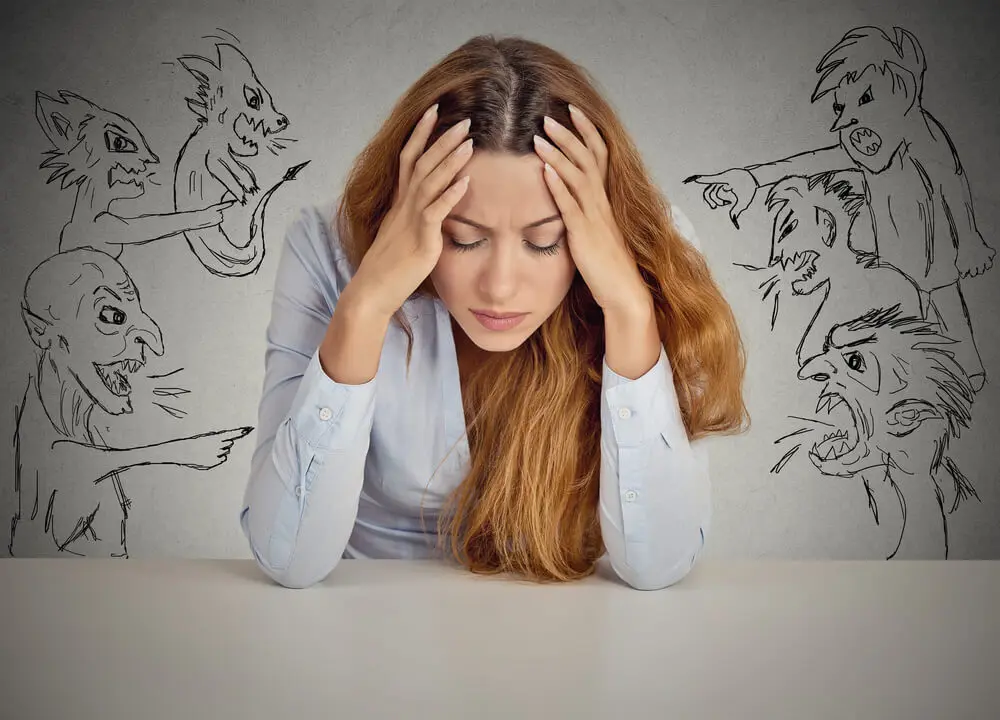What is Attitude? 15 Types of Attitude and Their Characteristics


Written and verified by the philosopher Maria Alejandra Morgado Cusati
At some point in life, we’ve all excused the behavior of others by saying that’s “just the way they are.” In these cases, we usually refer to their attitude, which could be defined as a relatively stable mental predisposition that influences all our reactions and actions.
That said, we can all guess the importance of developing appropriate attitudes. After all, the correct coping and performance in any task or situation depend on them. It’s not the same to do something negatively as to do it well, from a more positive predisposition.
Let’s take a closer look.
What is attitude?
According to the American Psychological Association, attitudes are a general and relatively lasting evaluation of an object, person, group, theme, or concept that goes from negative to positive.
Meanwhile, the father of social psychology, Floyd Allport, defines attitude as the mental and neurological disposition that is organized from experience that directs or moves the individual’s responses to all objects and all situations she or he interacts with.
That said, it could be said that attitude is someone’s state of mind that prepares him to react or behave in a certain way. Attitudes are also known as frames of reference, since they provide the background against which facts and events are analyzed.
The components of attitude
Generally speaking, every attitude is composed of three basic elements: cognitive, emotional, and behavioral elements. Below, we’ll detail each one.
Cognitive elements of attitude
This refers to the beliefs, thoughts, attributes, and opinions we associate with an object, situation, or person. These are usually revealed in generalities or stereotypes, such as all babies are cute or smoking is unhealthy.

Emotional elements of attitude
This is the emotional or sentimental segment of an attitude. In other words, they’re the emotions and feelings aroused by the object, subject, event, or person, which can be positive, neutral, or negative. This may include fear, hate, love, or indifference, for example.
Continuing with the example above, people might love all babies because they are cute or hate cigarette smoke because it’s harmful to their health.
Behavioral elements of attitude
This is made up of a person’s tendency to behave in a particular way toward the object, situation, or person. Using the same example, the behavioral component could be seen in affectionate actions towards babies or turning away from someone smoking.
You’ll definitely like this article: 8 Useful Tips to be an Independent Person
Types of attitudes
If we assume that attitudes are mental predispositions, then we can state that there are just as many traits that define a human being. Almost any characteristic that determines us and repeats itself over time can be considered to be an attitude. However, let’s take a look at the most common ones.
1. Positive
People who have a positive attitude tend to focus on the good aspects instead of the bad ones. Also, they don’t see a mistake or failure as an obstacle but as an opportunity.
2. Negative
People with a negative attitude ignore the good and pay attention to the bad. They often engage in avoidant or complaining behavior, which makes it difficult for them to achieve goals. They may even blame others for their failure.
3. Neutral
This attitude is present in people who don’t give enough importance to situations or events. They tend to ignore the problem and leave it for someone else to solve. In addition, they often don’t feel the need to change.
4. Proactive
This is an attitude that prioritizes action and always aims at efficiency, either in the performance of an activity or in problem-solving. Likewise, this mental disposition promotes creativity, the generation of added value, and the achievement of goals.
5. Reactive
A person with a reactive attitude will depend, to a great extent, on external instructions and resources to carry out an action or achieve a purpose. In addition, they tend to be dependent, with great difficulty in dealing with unforeseen events.
6. Self-interested
This type of attitude implies the search for one’s own benefit, either directly or indirectly. This way, what the person seeks in their actions is the achievement of their own individual goals, not taking into account the needs of others.
7. Altruistic
People with this type of attitude perform their actions to generate a benefit for others, even though their actions may have no profit or even cause losses. However, the term is a bit controversial since most actions benefit the person doing them, even if it’s indirect or passive.
8. Manipulative
Manipulative people voluntarily and consciously use others to achieve their own goals, favor their interests, or direct the situation to the desired point.
9. Passive
This attitude is characterized by a negative view of reality accompanied by a lack of initiative. The person does not approach action but avoids it. In addition, this attitude can lead to subordinating one’s own desires to those of others.
10. Aggressive
The aggressive attitude comprises a pattern of behavior whose intensity is variable. Thus, it ranges from gestures or words to physical fights whose purpose is always to harm the other.
11. Permissive
This type of attitude is linked to the propensity to be excessively flexible so that deviations from the norm are allowed and valued.
12. Assertive
Assertive people defend their own opinions and rights consistently, but always respecting others, being flexible, and offering a space for negotiation.
13. Suspicious
An excessive distrust of any stimulus characterizes these people. They’re often suspicious of hidden intentions, intricate motives, or forces beyond the situation at hand.

14. Flexible
People with flexible attitudes are characterized by adapting to other people’s situations without rejecting their own intrinsic characteristics. This allows them to understand the concept of life better: after all, we can’t always get what we want.
15. Inflexible
Finally, people with an inflexible attitude tend to have a rigid pattern of behavior and thinking. Therefore, they need to have their environment under absolute control (know it and dominate it). When this is not the case, they feel overwhelmed and uncomfortable.
We think you’d like to read: Seven Tips to Discover Your True Passion
Characteristics of attitudes
To better understand what attitudes are all about, here are some of their common characteristics:
- They help define our identity, guide our actions, and influence how we judge others.
- They are predispositions to evaluate and respond to events in the world, either favorably or unfavorably.
- Attitude is learned through social interaction and experience. Therefore, it’s not a natural phenomenon.
- All people, regardless of status or intelligence, have some kind of attitude.
- They can be actively modified through training or the mere exposure to the object or situation that provokes the attitude.
- Finally, attitudes arise from the interaction between biological, hereditary, and environmental factors.
The right attitude: The key to success
Overall, it’s important to remember that our predisposition when facing challenges and interactions conditions their outcome to a large extent. Therefore, it’s very important to cultivate appropriate attitudes towards life and our environment.
All cited sources were thoroughly reviewed by our team to ensure their quality, reliability, currency, and validity. The bibliography of this article was considered reliable and of academic or scientific accuracy.
- Albarracín D, Johnson B, Zanna M. The handbook of attitudes. Estados Unidos: Lawrence Erlbaum Associates Publishers; 2005.
- American Psychological Association. Attitude [Internet]. Washington: American Psychological Association; 2020 [consultado 30 octubre 2021]. Disponible en: https://dictionary.apa.org/attitude
- Banaji M, Heiphetz L. Attitudes. En: S. T. Fiske, D. T. Gilbert y G. Lindzey (Eds.). Handbook of social psychology. 5ta Edición. Estados Unidos: John Wiley & Sons, Inc.; 2010. pp. 353–393.
This text is provided for informational purposes only and does not replace consultation with a professional. If in doubt, consult your specialist.








